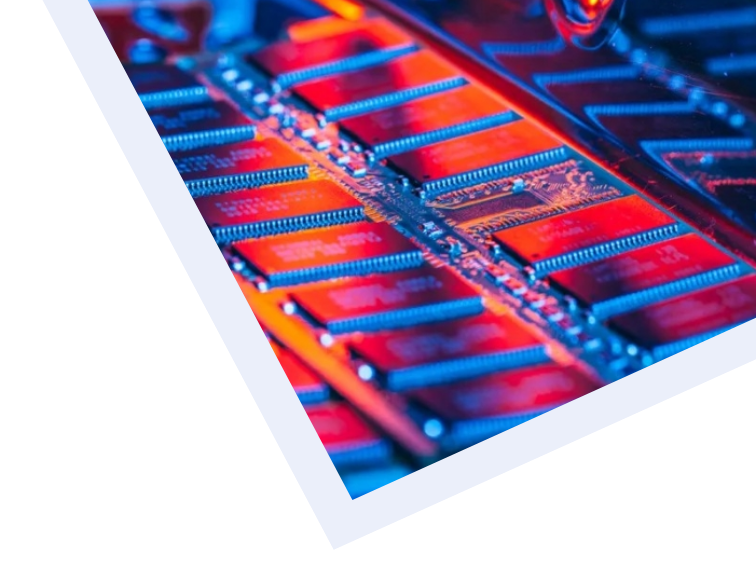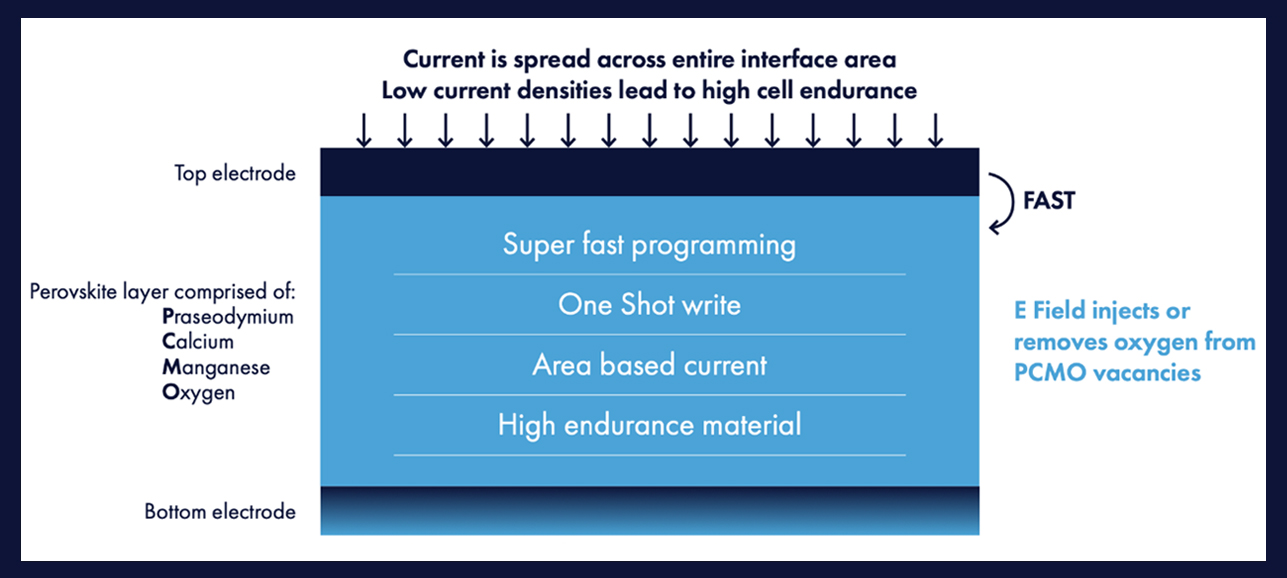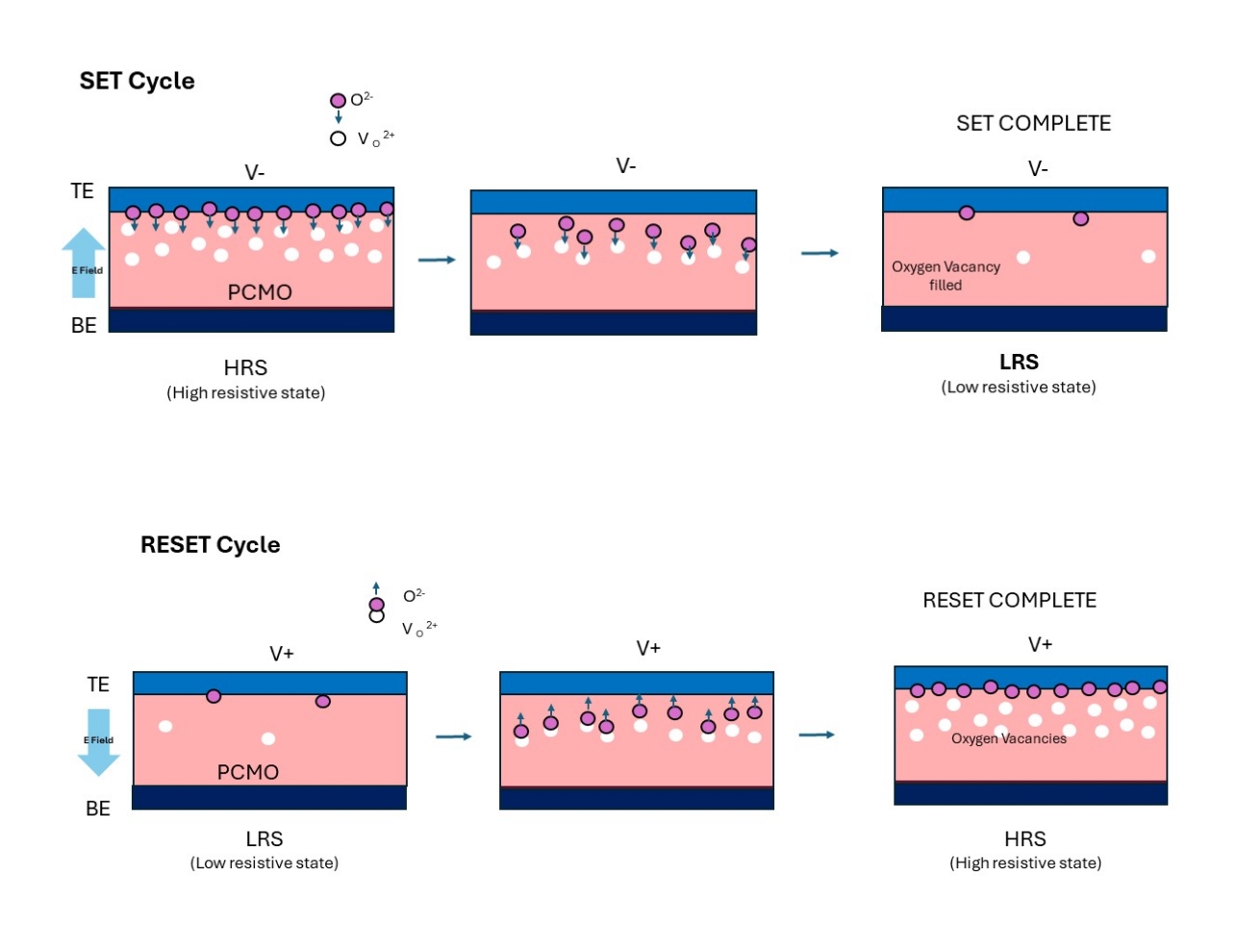The technology behind 4DS Memory is a type of Resistive Random Access Memory (ReRAM) which switches the memory cell between a High Resistive State (HRS) and Low Resistive State (LRS). This state is then read by the memory circuitry to determine if the cell is programmed to a ‘1’ or ‘0’, in the digital sense.
While there are many other ReRAM technologies on the market, the 4DS cell is based on a different physical switching mechanism, which gives us the high speed, high endurance and tunable retention characteristics that place 4DS in a unique application space. This mechanism is called Area Based Interface Switching and is based on the nature of the 4DS cell.


PCMO and Area Based Interface Switching
PCMO refers to the physical make-up of the 4DS cell. It stands for the elements that comprise the cell – Praseodymium, Calcium, Manganese and Oxygen – and the specific lattice structure of the cell, called Perovskite. In this configuration the oxygen atoms – due to their physical location in the crystal and their electronic shell structure – support electron current flow through the material.

PCMO belongs to a class of Interface Switching ReRAM where the switching mechanism is based on the interface characteristics of the cell. Specifically, the entire interface area is involved in the switching, which is why it is sometimes also called area-based switching. During the switching, which is initiated by an electronic pulse, oxygen ions are moved in and out of specific sites or vacancies in the Perovskite lattice. When this oxygen is present, the cell conducts, and it is said to be SET. Likewise, when the oxygen is depleted the current is lost, and it is said to be RESET.
While there have been many universities and companies that have experimented with PCMO or other Area-based ReRAM in the past, looking at different interfaces, different materials and different processing approaches, only 4DS has gone so far in developing a commercially viable PCMO ReRAM cell. We have demonstrated the reliable performance, endurance and other characteristics of the cell. We continue to invest in advancing the technology and toward scaling the technology for the highest density applications.

Sign up for the latest news from 4DS Memory
Engage with us directly by asking questions, watching video summaries and seeing what other shareholders have to say via our investor hub.
